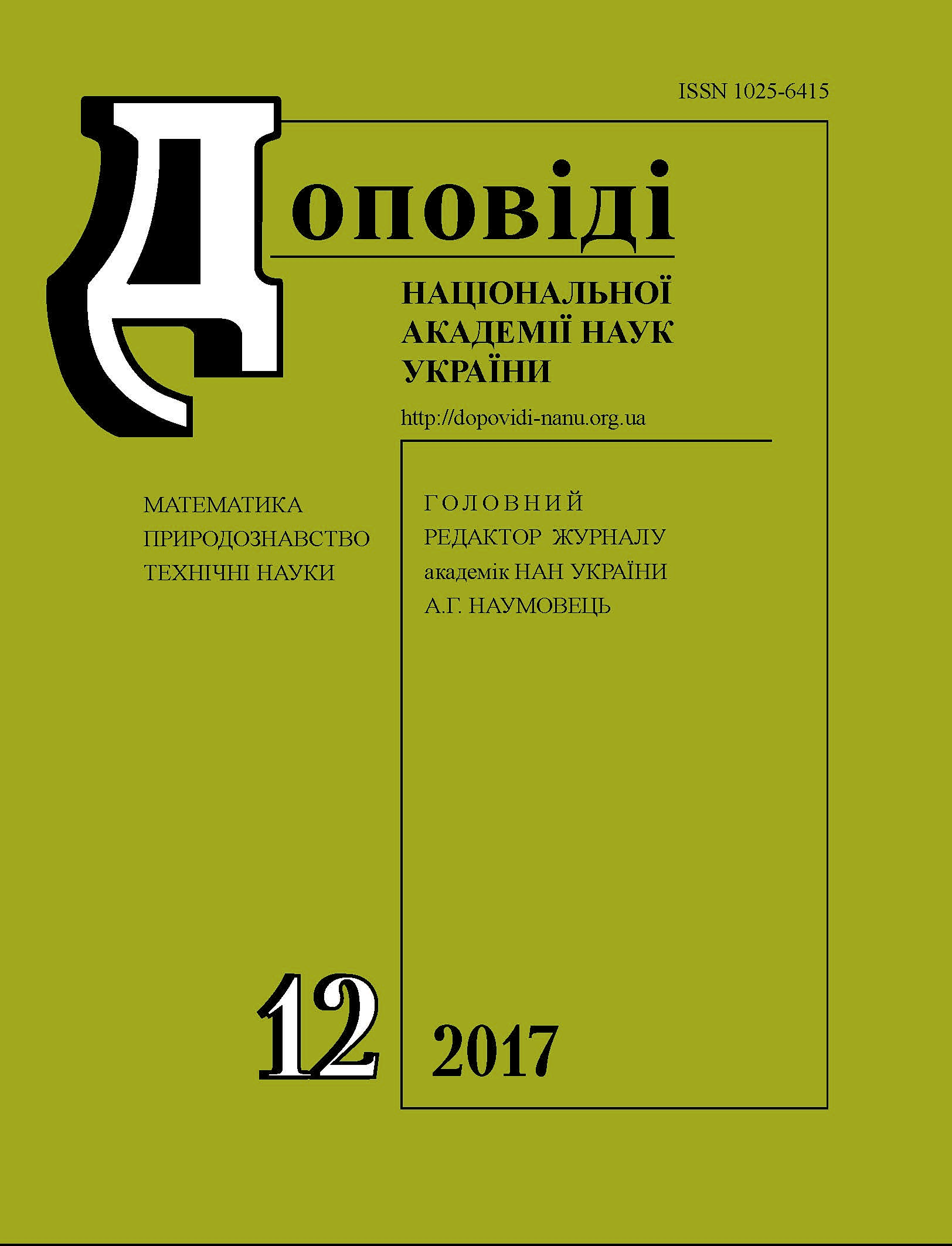Assessment of the effect of carbon nanohorns on the microviscosity of membranes of erythrocytes and rat plasma proteins by the method of spin probes
DOI:
https://doi.org/10.15407/dopovidi2017.12.073Keywords:
anisotropy of SPR spectra, carbon nanochorns, cytotoxicity, method of spin probes, microviscosity of erythrocyte membranes, polarity of the microenvironment of a probe in the membrane, serum albuminAbstract
By the method of spin probes, we have studied the effect of initial and oxidized carbon nanoshorns on the microviscosity of rat erythrocyte membranes and the viscosity of the water-containing plasma protein matrix. Introduction of nanohorns in a concentration of 100 μg/ml into erythrocyte suspension results in an increase in the membrane microviscosity within four hours (about 60 % effect), increasing the polarity of a microenvironment for lipophilic probes in the outer layer of membrane phospholipids, and a disorder of erythrocyte's membranes. Introduction of nanohorns in plasma leads to a slight reduction in the viscosity of water and the protein matrix, apparently, due to its partial destruction, especially macromolecules of serum albumin. Cytotoxicity of pristine and oxidized nanohorns evaluated by us is higher as compared to the nanoparticles of oxidized graphene, but is significantly lower than the carbon nanotubes, which are capable of dramatically increasing the microviscosity of membranes of erythrocytes and disrupting their integrity.
Downloads
References
Iijima, S., Yudasaka, M., Yamada, R., Bandow, S., Suenaga, K., Kokai, F. & Takahashi, K. (1999). Nano-aggregates of single-walled graphitic carbon nano-horns. Chem. Phys.Lett., 309, Iss. 3-4, pp. 165-170. doi: https://doi.org/10.1016/S0009-2614(99)00642-9
Murata, K., Kaneko, K., Kokai, F., Takahashi, K., Yudasaka, M. & Iijima, S. (2000). Pore structure of singlewall carbon nanohorn aggregates. Chem. Phys. Lett., 331, pp. 14-20. doi: https://doi.org/10.1016/S0009-2614(00)01152-0
Piotrovsky, L.B. & Melik-Ogandzhanyan, R. G. (2011). Properties and biological potential of single-walled carbon nanohorns (SWCNH). FARMA, No. 1, pp. 120-128 (in Russian).
Ajima, K., Yudasaka, M., Murakami, T., Maigné, A., Shiba, K. & Iijima, S. (2005). Carbon nanohorns as anticancer drug carriers. Mol. Pharm., 2, pp. 475-480. doi: https://doi.org/10.1021/mp0500566
Liechtenstein, G. I. (1974). The method of spin labels in molecular biology. Moscow: Nauka (in Russian).
Berliner, L. (Ed). (1979). The method of spin labels. Theory and applications. Moscow: Mir (in Russian).
Kartel, N.T., Ivanov, L.V., Karachevtsev, V.A., Lyapunov, A.N., Nardid, O.A., Cherkashina, Ya.O., Leontiev, V.S. & Ivanov, A.Yu. (2017). Estimation of the interaction of oxidized graphene with rat's erythrocyte membranes and blood plasma proteins by the method of spin probes. Dopov. Nac. acad. nauk Ukr., No. 8, pp. 71-79 (in Russian). doi: https://doi.org/10.15407/dopovidi2017.08.071
Moiseeva, N. N., Kravchenko, L. P., Semenchenko, A. A. & Petrenko, A. Yu. (2002). Effect of transplantation of hepatocytes subjected to hypothermic storage on liver regeneration in rats after partial hepatectomy. Probl. Cryobiol., No. 1, pp. 24-31 (in Russian).
Okotrub, A. V., Shevtsov, Yu. V., Nasonova, L. I., Sinyakov, D. E., Chuvilin, A. L., Gutakovskiy, A. K. & Mazalov, L. N. (1996). Synthesis of monolayer closed carbon particles in an electric arc discharge. Inorganic
materials, 32, No. 8, pp. 974-978.
Gurova, O. A., Omelyanchuk, L. V., Dubatolova, T. D., Antohin, E. I., Eliseev, V. S., Yushina, I. V. & Okotrub, A. V. (2017). Synthesis and modification of the structure of carbon nanochannels for use in hyperthermia. J. Struct. Chem., 58, No. 6, pp. 1252-1259.
Ivanov, L. V., Lyapunov, O. M., Kartel, M. T., Nardid, O. A., Okotrub, A. V., Kirilyuk, I. A. & Cherkashina, Ya. O. (2014). Delivery of spin probes by carbon nanotubes in erythrocytes and plasma of blood. Surface, Iss. 6, pp. 292-304.
Kartel, M. T., Ivanov, L. V., Lyapunov, O. M., Nardid, O. A., Okotrub, A. V., Kirilyuk, I. A. & Cherkashina, Ya. O. (2015). Estimation of the effect of carbon nanotubes on the microviscosity of erythrocyte membranes by the spin probe method. Dopov. Nac. akad. nauk Ukr., No. 3, pp.114-121 (in Russian). doi: https://doi.org/10.15407/dopovidi2015.03.114
Zhdanov, R.I. (1981). Paramagnetic models of biologically active compounds. Moscow: Nauka (in Russian).
Downloads
Published
How to Cite
Issue
Section
License
Copyright (c) 2024 Reports of the National Academy of Sciences of Ukraine

This work is licensed under a Creative Commons Attribution-NonCommercial 4.0 International License.



